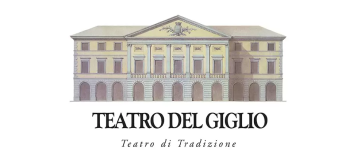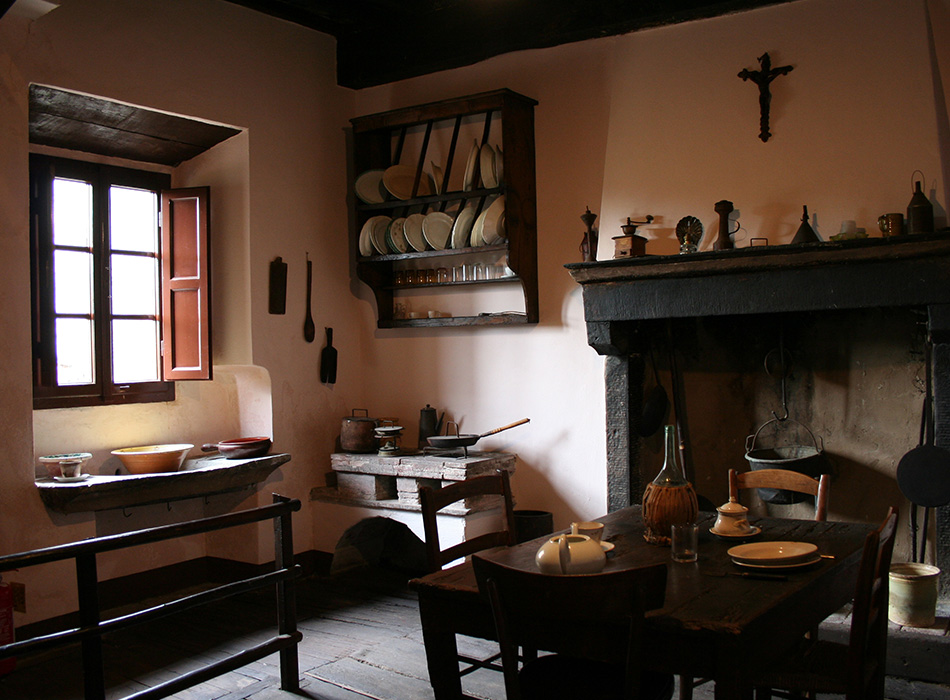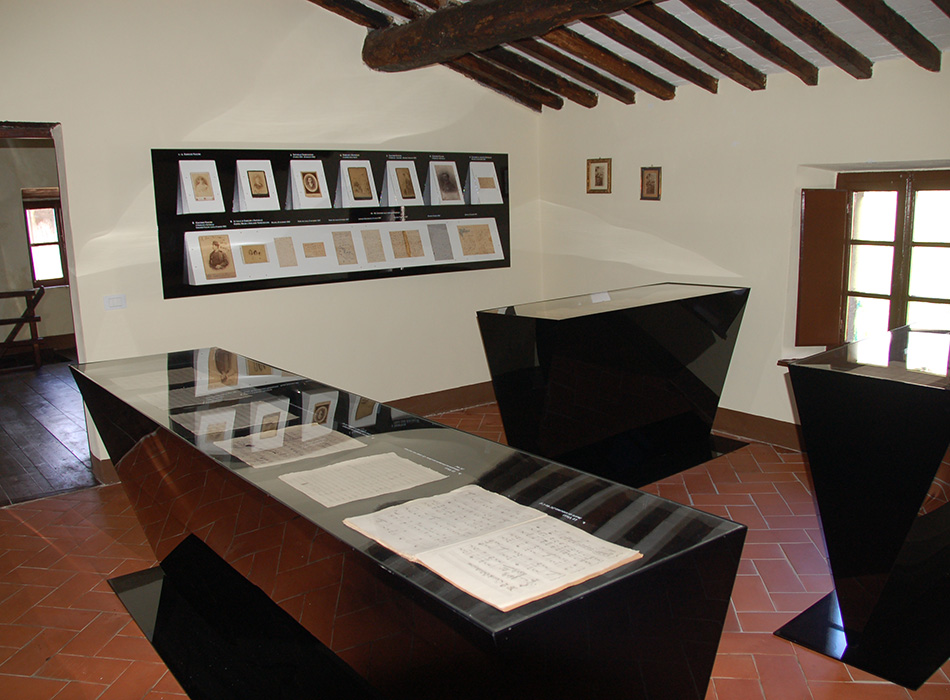
1. Hall
In the large hall, which functions as an entrance, you are immediately surrounded by a feeling of history: the large genealogical tree of the Puccini family and the portraits of his ancestors (Giacomo senior, Antonio and Domenico) take us back in time giving us the perception of finding ourselves at the starting point of a long story. The visitor’s glance is also attracted by a piano, on which Puccini composed part of Butterfly; hanging on the wall above is the laurel wreath which Giacomo placed at his mother’s deathbed, and which had been given to him after the success of his first opera, Le Villi, in 1884. Giacomo Puccini’s favourite armchair and the gramophone given to him by Thomas Alva Edison are also on show here.
2. Bedroom
This room hosts the furniture of Michele Puccini and Albina Magi’s bedroom in their home on Via di Poggio in Lucca: the toilette, the dresser with its mirror, a bedside table and the double bed where Giacomo was born on 22 December 1858. Of particular interest is the painting at the top of the bed attributed to the 18th century painter Giuseppe Antonio Luchi aka il Diecimino.
3. Kitchen
The kitchen has remained the same as two centuries ago, with the original wood floor and obviously a little worn. Today it is a valid and important example of the kitchen of a country home of the past; the stone wash basin, the coal powered hob, the cauldron, the box for storing the chestnut flour and the testi (two cast-iron plates) for the necci (chestnuts). Everything has remained intact.
1. Family room
This room is dedicated to Giacomo’s family: there are portraits of his parents, his sisters and his brother Michele, but also of his maternal uncle Fortunato Magi, also a talented composer, and his cousin Michele, Nicolao Cerù, who financially supported Giacomo’s studies in Milan. The letters written to his mother on display in the panel together with those sent to his brother Michele whom Giacomo recommends commitment to study and the result of his exams at the Conservatory relate to this time.
2. Room dedicated to Bernardo Romei
Family objects are on show in this room: the gown in which Giacomo was baptised, the crib, the desk where his father worked with the bust which portrays him, the sewing machine and the wooden box for his mother’s sewing work. The display case also shows some documents including the “Codice di Celle” (an 18th century manuscript, part of the family library).
3. Sitting room
The third room is dedicated to the relationship between Giacomo Puccini and his sister Ramelde, the brother-in-law Raffaelo Franceschini and their three daughters, but also to the love which the musician always held for the small village where his great-great grandfather was born. Some panels display portraits, photos and evidence of letter exchanges, which include references to the composer’s work and to the representation of his works. The large display case contains manuscripts with handwritten parts and sketches of Le Villi and of Edgar. The other panel is dedicated to the great passions of Giacomo for hunting and his interest in cars; we point out the photo taken by his friend Alfredo Caselli regarding the accident that happened to him in 1903.
Photo gallery
Do you want to book
a visit to the Museum?
Discover the places around Lucca linked to Giacomo Puccini
The province of Lucca is dotted with places linked to the figure of the great Composer
PUCCINI MUSEUM
CASA NATALE

FONDAZIONE FESTIVAL
PUCCINIANO





